The American Civil War was a major event in U.S. history which lasted from April 12, 1861 to May 9, 1865. It saw an armed conflict between the Union, which proclaimed loyalty to the U.S. Constitution; and the 11 Southern states that seceded from the Union and formed the Confederate States of America. The 23 Northern states were far superior than the Southern states in terms of manpower and arms production. However, the South had tremendous wealth and influence as it was the primary cotton supplier of the world.
The Civil War started with the Confederate attack on Fort Sumter and the Battle of Gettysburg is generally considered as the victory that decisively turned the war in favor of the Union. The Civil War remains the deadliest war for the country with estimated deaths between 600,000 and 800,000. It had many far reaching effects including the Emancipation Proclamation and important changes to the U.S. constitution. The American Civil War is the most studied and written about episode in the history of the United States. Know more about it through these 10 interesting facts.
#1 SLAVERY FOR CLOSE TO A CENTURY WAS THE PRIMARY CAUSE OF THE CIVIL WAR
In the late 18th and 19th century the economy of the American South was dependent on cotton grown by black slaves. The social, political and economic structures of the region thus propped up to guard the interests of those who benefited from it. With its limited exposure to slavery and being more industrialized, the Northern states were not dependent on this social evil. In the initial years of independence there were as many slave states as there were non-slave states. But with the addition of newer territories to the United States the politics began to heat up. When the slave territory of Missouri sought statehood in 1818, Congress debated for two years before arriving upon the Missouri Compromise of 1820. This was the first of a series of political deals that resulted from arguments between pro-slavery and anti-slavery groups.

In 1848 the addition of a vast territory of close to 500,000 square miles after the Mexican American war further galvanized the issue. Addition of more non slave states was making the Southerners jittery who felt that the institution of slavery would die a natural death in a union dominated by non-slave states. By the mid-19th century the rifts had widened. Many social groups and anti-slavery literature had cropped up in the north and had also made political inroads. In the 1860s the problem could no longer be resolved politically and the 11 southern states seceded from the Union leading to the Civil War.
#2 NORTHERN STATES WERE FAR SUPERIOR THAN CONFEDERATE STATES IN NUMBERS
At the beginning of the civil war there were 23 Northern states with 21 million people as compared with some 9 million in the South of whom about 4 million were slaves. This meant more than a 2 – 1 edge in available manpower along with much greater resources. There were close to 100,000 manufacturing plants in the North to 18,000 in the south and a 30 to 1 superiority in arms production. The North had 70 percent of the rail networks and a small but efficient army and navy. However, the cause of the south was not a lost one. Cotton was the driving force of the world in those times and the southern American states were the bulk cotton suppliers of the world at the time. The South had a coastline of over 3500 miles. They could deny any blockade and their armies had the advantage of fighting on interior lines.
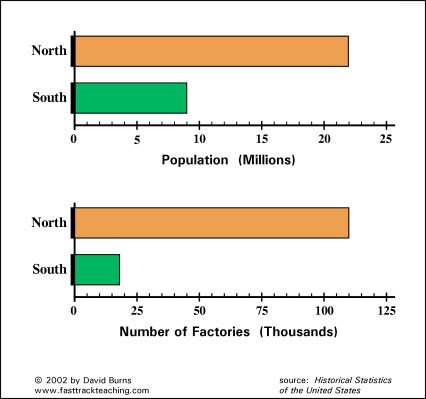
#3 THE CONFEDERATES BELIEVED THAT KING COTTON WOULD BAIL THEM OUT
Cotton was the economic driver of the world economy in those times. Being the cotton basket of the world for some years now, the southerners felt that King Cotton would easily bail them out. Confederate leader Jefferson Davis, a Mississippi planter and former U. S. senator, strongly supported what would be later known as the King Cotton diplomacy. There was a belief that an informal embargo on cotton would lead Great Britain into formal recognition of the Confederacy and would lead to a diplomatic intervention with other European countries on behalf of the South. 2.5 million Bales of cotton were burned in the South to create a cotton shortage but the cotton famine of Britain would not arrive for another 2 years. The South had made miscalculations. With the export of bumper crops for many years, Great Britain had a surplus of cotton. The time would allow the British to turn to other countries for cotton and the American Civil War had long started till then.
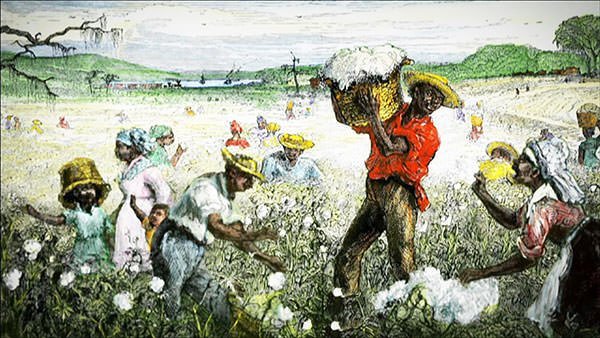
#4 A FICTION NOVEL WAS MOST EFFECTIVE IN GALVANIZING PUBLIC OPINION AGAINST SLAVERY
Uncle Tom’s Cabin was a path breaking fiction novel by Harriet Beecher Stowe, first published in installments in a magazine during 1850–51. It appeared as a book in 1852 selling 300,000 copies in that year and it continued to sell well for many more years. Though abolitionist press had been running in America for a few decades, many viewed them as an extreme fringe. In her work of fiction, however, Harriet Beecher Stowe was able to connect to the general readers delivering an extremely sensitive and powerful message. Uncle Tom’s Cabin portrayed the lives of the slaves and their owners, how slavery operated as a business, how the slaves were bought and sold, and how they were separated from their families.
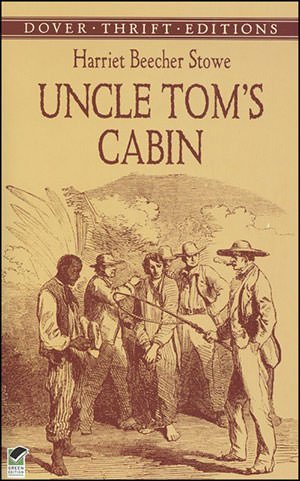
Stove’s characters were white and black, of the North and the South, benevolent and sadistic, all grappling with the institution of slavery. The novel with its tremendous success was instrumental in changing the public perception on slavery. It is often quoted though not verified that when Abraham Lincoln met Stowe at the White House in December 1862, he reportedly greeted her by saying, “Is this the little woman who made this Great War?”
#5 IT BEGAN WITH A CONFEDERATE ATTACK WITH NO VICTIMS
During the secession crisis, many threats were made to Federal Forts in the south. On 26th December 1860, after the secession of South Carolina, Major Robert Anderson, federal officer in command at the difficult to defend Fort Moultrie moved his men along with their families to Fort Sumter. What followed was basically a siege of Fort Sumter, with supplies and communication controlled by Governor Francis Pickens. Negotiations continued for many days between Confederate General Pierre G.T. Beauregard and Major Robert Anderson, the Sumter garrison commander. When the talks failed to resolve tensions, Beauregard opened fire on Fort Sumter on the morning of April 12, 1861. Ironically, this first engagement of what would be the bloodiest war of American history, claimed no victims. After a 34-hour bombardment, Maj. Robert Anderson surrendered his command of about 85 soldiers to some 5,500 besieging Confederate troops under P.G.T. Beauregard.
#6 EMANCIPATION PROCLAMATION LEGALLY FREED 3.1 MILLION SLAVES IN AN INSTANT
Although Abraham Lincoln considered slavery as an abhorrent evil, as a lawyer and a politician he knew that the constitution protected slavery in the states where the citizens seemed to want it. In his first inaugural address, Lincoln declared that he had “no purpose, directly or indirectly, to interfere with slavery in the States where it exists”. With his election as president, the Secession Crisis and the Civil War, the political scenario began to change. After a series of victories in the early 1862, the Union suffered some demoralizing defeats. The large slave population of the south, though not involved in direct action, were helping the southerners in various other ways. The argument that emancipation was a military necessity was gaining ground. In mid-1862, Lincoln decided on the Emancipation Proclamation calling his cabinet for discussion. However, Lincoln’s Secretary of State William H. Seward persuaded him to withhold the proclamation as the Union armies were being defeated. Seward argued that the sudden move would look like an act of desperation.
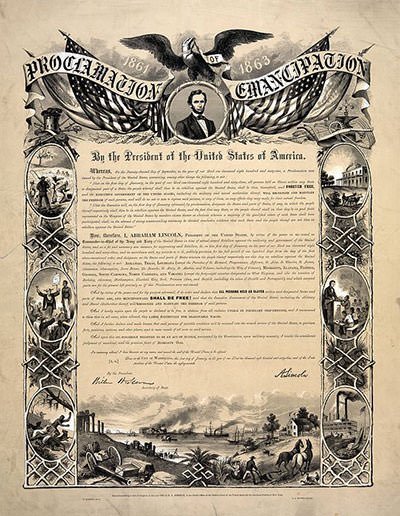
On September 17, 1862 the Union forces forced the Confederates to retreat at the Battle of Antietam. A tactical and moral victory for the North rather than a military one. Five days later on 22nd September, 1862 Lincoln issued a preliminary warning that he would order the emancipation of all slaves in any state that did not end its rebellion against the Union by January 1, 1863. The proclamation came into effect on the historic day of January 1, 1863 legally freeing 3.1 million of the nation’s 4 million slaves. It is noteworthy that the new law did not free slaves being held in the border states of Delaware, Maryland, Kentucky and Missouri. Lincoln was concerned that the issuance of a universal emancipation of all slaves would persuade these states to secede from the Union and join the Confederacy.
#7 THE BATTLE OF GETTYSBURG IS CITED BY MANY AS THE TURNING POINT OF THE WAR
Described by many historians as the turning point of the Civil War, the Battle of Gettysburg was fought between the Union Army of the Potomac under Major General George Meade and the Confederate Army of Northern Virginia under General Robert E. Lee. In the summer of 1863, the vital strategic city of Vicksburg on the Mississippi River was under siege by the Union forces. In the hope of building pressure on the Union and drawing out General Grant from Vicksburg, Confederate General Robert E. Lee invaded the North again, this time marching to Pennsylvania. Using the Shenandoah Valley as cover, Major General Joseph Hooker of the Union moved his army in pursuit. Hooker however soon lost favor with President Lincoln and was replaced just three days before the battle by Major General George Meade.
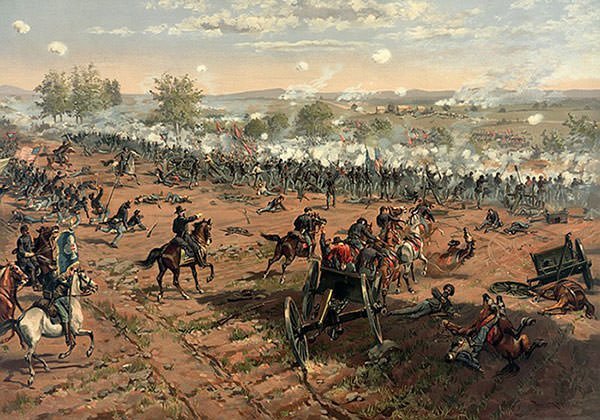
Fighting began on the morning of 1st July, 1863 in the town of Gettysburg and continued over the course of three days. The battle is remembered for the full assault of close to 15,000 Confederate infantry men against the center of the Union line on Cemetery Ridge. Now famously known as the Pickett’s Charge, this failed attack by Lee is cited as the primary reason for the Confederate defeat. Lee’s army conceded the field on the 4th of July and staggered back to Virginia. Another Northern invasion had failed. There were close to 50,000 casualties over three days, the costliest in US history.
#8 THE AMERICAN CIVIL WAR IS THE BLOODIEST BATTLE IN U.S. HISTORY
The American Civil War remains the deadliest battle for the country with estimated deaths between 600,000 and 800,000. The war claimed close to 50 percent more American lives than World War 2, and 5 to 6 times more lives than World War 1. The Battle of Gettysburg was the bloodiest of all claiming close to 50,000 casualties followed by Chickamauga and Spotsylvania. Diseases, infections and injury were the giant killers. Wounded soldiers were housed in overfilled hospitals with filthy conditions. The worst injuries were caused by the Minni Ball rifle bullets of British Enfield and American Springfield rifles, which were used extensively in the war. Conditions were deplorable in Union and Confederate prisons, where prisoners often died from outright neglect or starvation. At the infamous Camp Sumter prison camp in Georgia, prisoners were described as “walking skeletons”. The Camp Sumter prison claimed the life of close to a fourth of its 45,000 prisoners.

#9 AT THE TIME OF THE WAR MOST PEOPLE BELIEVED JEFFERSON DAVIS AS MORE CAPABLE THAN LINCOLN
Born about 100 miles apart in the state of Kentucky, Abraham Lincoln and Jefferson Davis would be commander in chiefs of the rival Union and Confederate camps during the period of the American Civil War. The stark contrast between the two marks a humbling lesson from the annals of history that there is often more than what meets the eye.
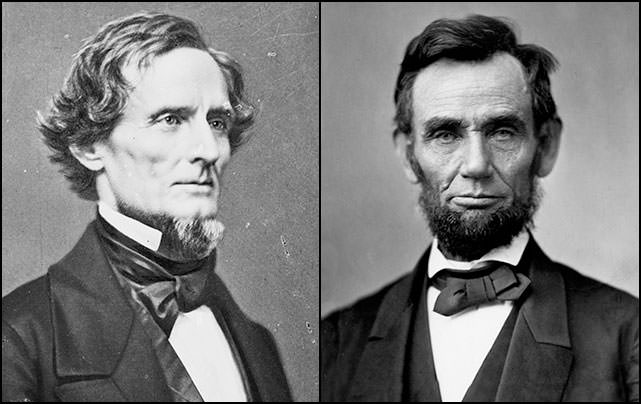
Lincoln was born in a log cabin in a poor family to undistinguished parents, he had little formal education and limited resources to begin with. Davis on the other hand was born in Southern aristocracy and was sent to the finest educational institutions in Kentucky like the Transylvania University in Lexington.
Davis was a graduate from the US Military Academy in 1828, a hero of the Mexican American war, a senator from Mississippi, and had served as Secretary of War under President Franklin Pierce in 1853. Lincoln is mostly described as a simple man. He ran a small general store on credit and found the business to be unsuccessful. He served as a captain in the Illinois Militia for a brief period in the Black Hawk War and saw no action.
Jefferson Davis moved to Mississippi, where he became involved in cotton planting. As a distinguished military man and now a plantation owner, Davis became an image of an ideal Southern gentleman. Lincoln served as New Salem’s postmaster and later as county surveyor until he finally became a lawyer of repute. He served in the Illinois state legislature and as an undistinguished one-term member of the U.S. House of Representatives.
It was perhaps for these reasons that at the dawn of the civil war most people thought Davis to be abler than Lincoln. Davis is still respected by many for his fine qualities, including dignity, firmness, determination and honesty. However, Abraham Lincoln is remembered as one of the greatest leaders in the history of America.
#10 IT LED TO MAJOR CHANGES IN THE UNITED STATES CONSTITUTION
The defeat of the South in the Civil War marked the beginning of the Reconstruction Era which was a plan to integrate the southern states into the federal union. The Emancipation Proclamation had already freed more than 3 million slaves in the south and many in the North were committed to bringing laws for their equality. In the five years following the Civil War, the United States adopted the 13th, 14th and the 15th Constitutional amendments.
- The Thirteenth Amendment to the United States Constitution officially abolished slavery and involuntary servitude, except as punishment for a crime. The US senate passed it on 8th April, 1864 and it was incorporated into the federal constitution on 18th December, 1865.
- The Fourteenth Amendment was bitterly contested especially by the Southern States. Added to the Federal Constitution on July 20, 1868, the amendment declared that all persons born or naturalized in the United States are American citizens including African Americans.
- The Fifteenth Amendment prohibited the federal and state governments from denying a citizen the right to vote based on that citizen’s “race, color, or previous condition of servitude”. It was ratified and added to the Federal Constitution on February 3, 1870.
Many other laws were passed, state constitutions were rewritten and efforts were made for the upliftment of the blacks. The reconstruction era ended in 1877 and is considered a failure with laws being ignored and twisted and newer laws being written to subjugate the black race as the fervor of the civil war would fade. However, these constitutional changes did improve the lives of African Americans to some extent. They would also bear fruit over 100 years later in the Civil Rights Movement.

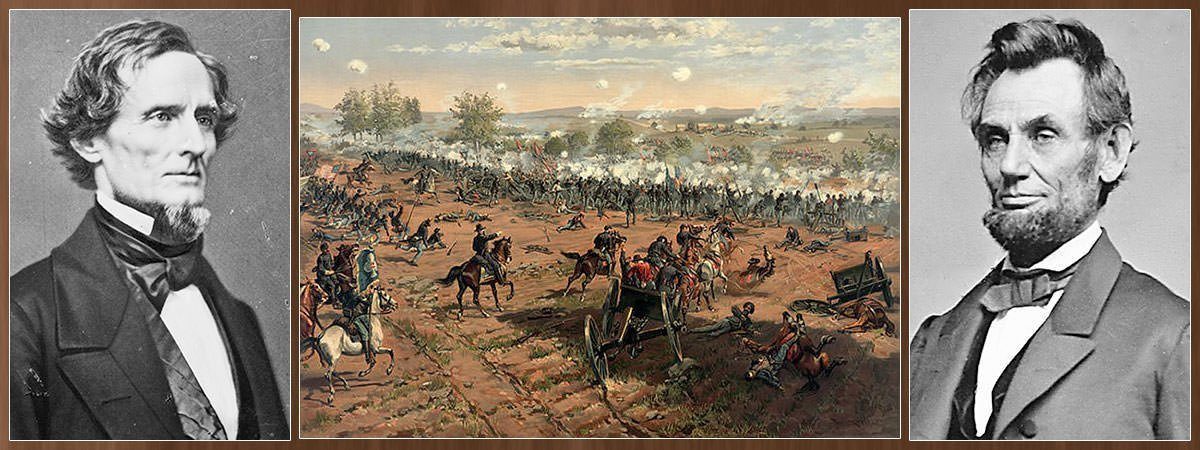
Slavery did not cause the Civil War. Lincoln was quite willing to let slavery remain to avoid Civil War. Tariffs were the straw that broke the camel’s back for the South. How tariffs adversely effected the South had been a problem for decades. When the South succeeded the north could not stand to loose millions in Tariff fees. That was how the Federal govt collected revenue through tariffs and fees. There was no income tax on individuals or business.
Lincoln did not free the slaves. Congress did.
That’s about as one-sided as can be. Some of the things are true, but not all. Some is speculation.
this website was very unusefull for my project in social studies. i only used 000 FACTS